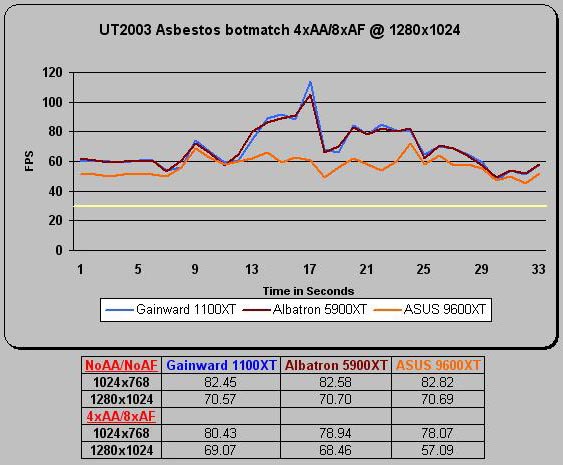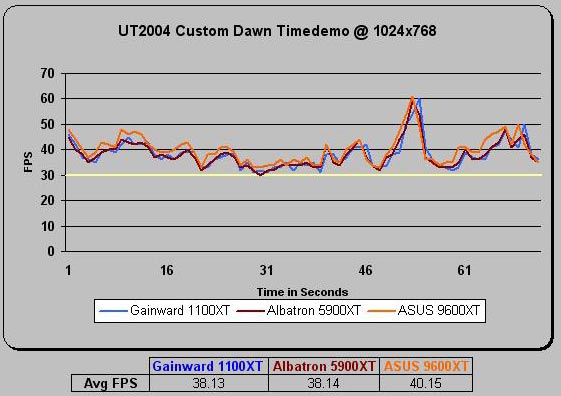Gainward Ultra/1100XT TV-DVI Video Card
Game Tests
Unreal Tournament 2003 v2225
We used the DM-Asbestos Botmatch Benchmark customized to run at 1024×768 and 1280×1024 resolutions. We also ran each resolution with NoAA/NoAF and 4xAA/8xAF set by the driver.

Here we see the Gainward and Albatron 5900XTs run at almost identical peformances. Another important thing to point out is how the 9600XT performed at almost equal frame rates in all tests except for 1280×1024 and 4xAA/8xAF, but the frame rates for the 9600XT in this test were still over the 30 fps threshold shown in the line graph.
Unreal Tournament 2004
The new Unreal Tournament 2004 is a lot more graphic intensive than its predecessor UT2003. We ran a custom, in-house demo from the ONS-Dawn map. For this set of cards, only 1024×768 and NoAA/NoAF was tested.

Similarly to the UT2003 results, at NoAA/NoAF settings, the 9600XT performs right on target with the 5900XTs. In fact, the results show the 9600XT running an average of 2 fps faster than the 5900XTs. The line graphs shows this interesting point as well!
Halo v1.01
Halo, as one of the most graphic intensive games currently on the market, was only tested at 1024×768 with NoAA/NoAF.

Halo shows the Gainward and Albatron cards performing very close together. Occasionally in the line graph, we see the clock speed gains from the Gainward card. The 9600XT runs almost 10 fps slower than the 5900XTs.
Call of Duty
Call of Duty is another pretty graphic intensive game. Due to this, instead of using 4xAA/8xAF, we lowered it to 2xAA/8xAF and the graph shows the results of 1024×768 at 2xAA/8xAF.

Call of Duty shows the Gainward cards clock speed benefits. The 9600XT is the only card that regularly dips below the 30 fps mark when run at 1024×768 and 2xAA/8xAF.

Comments are closed.